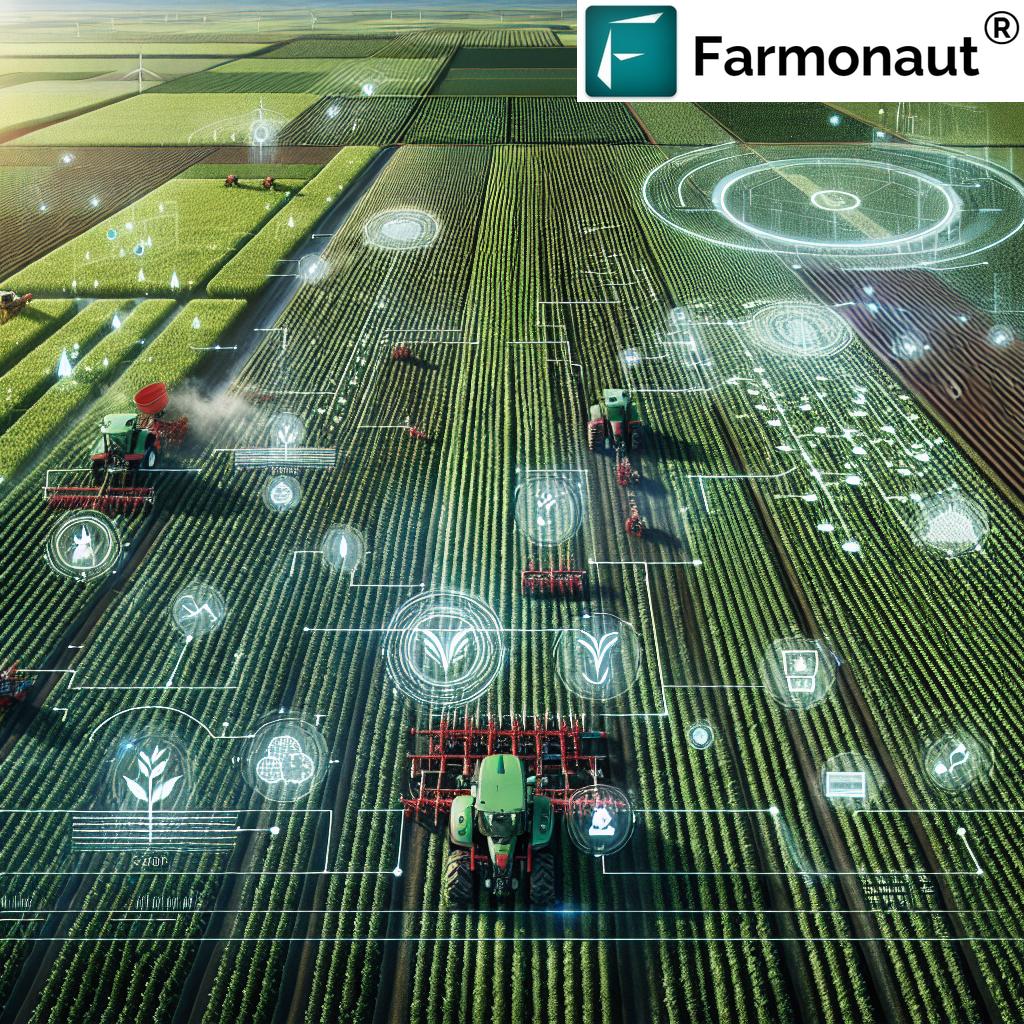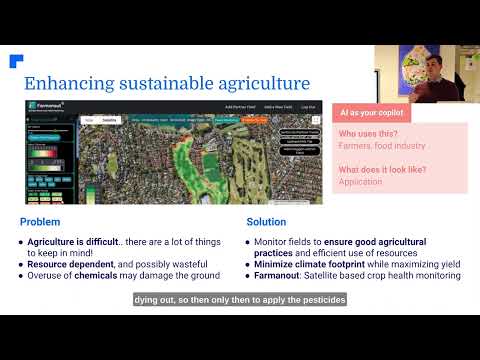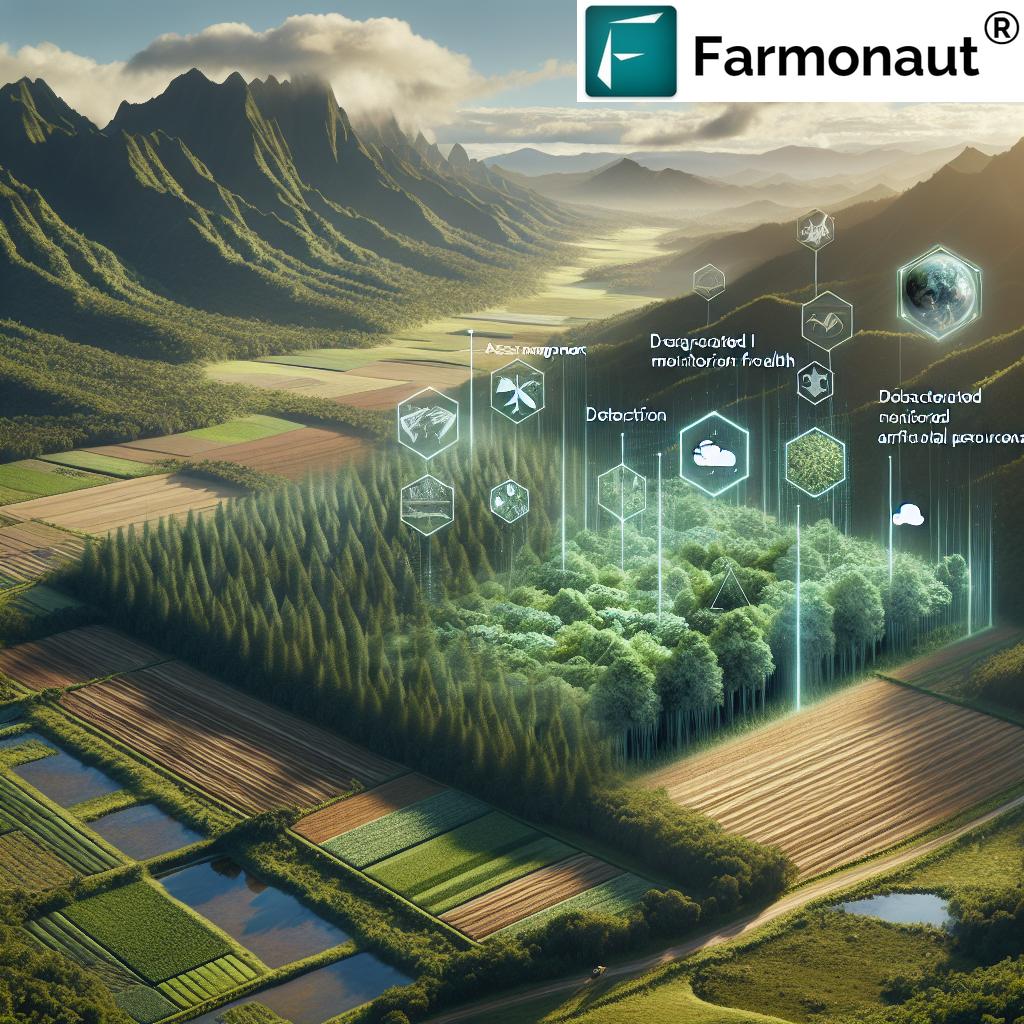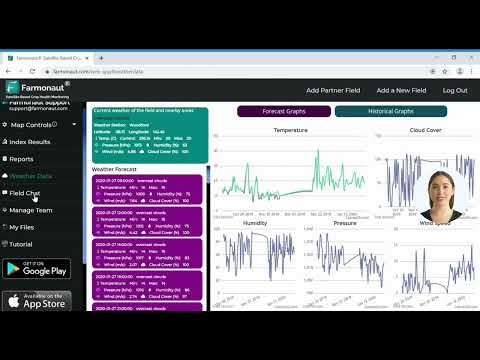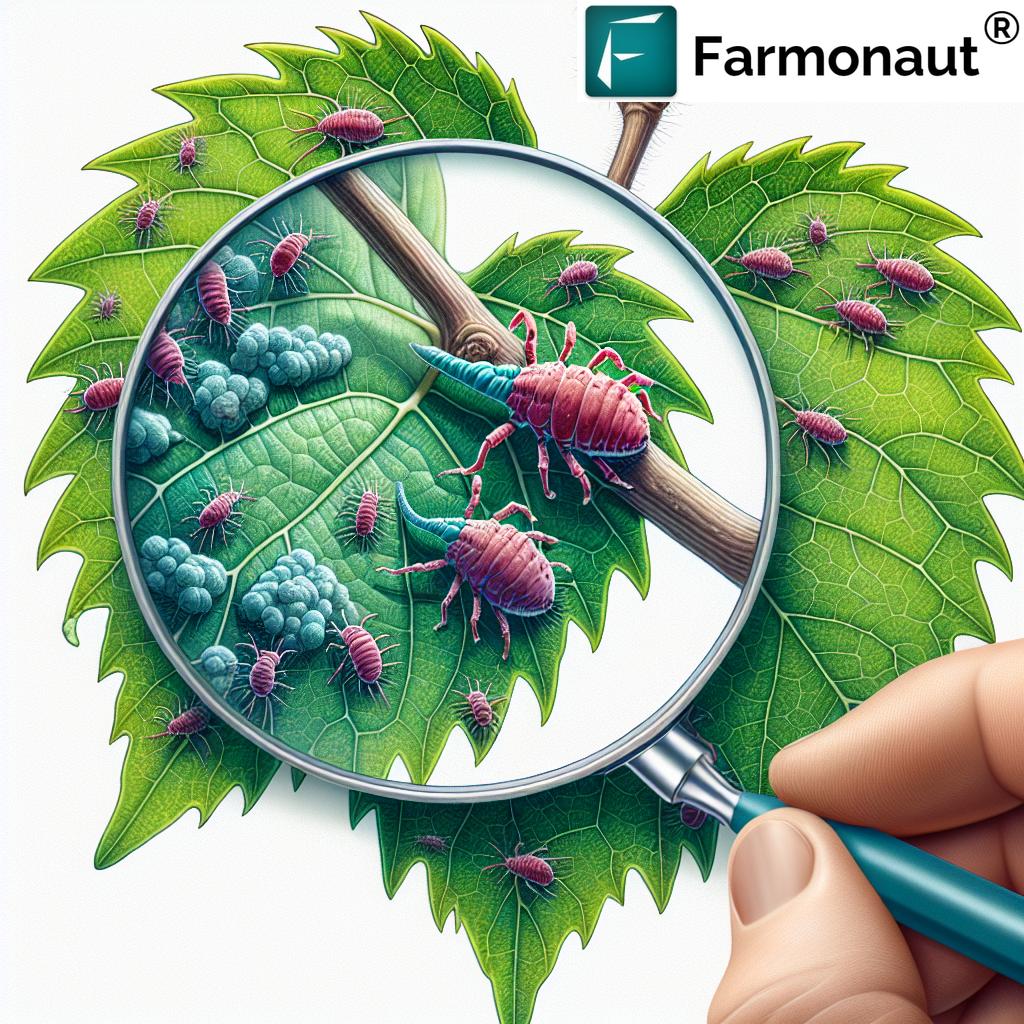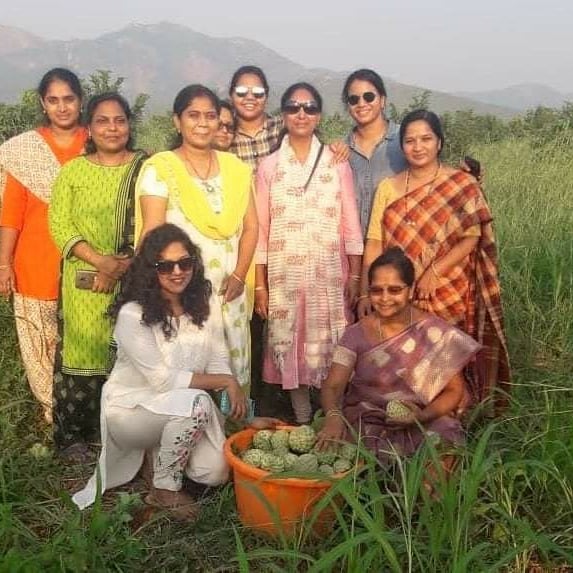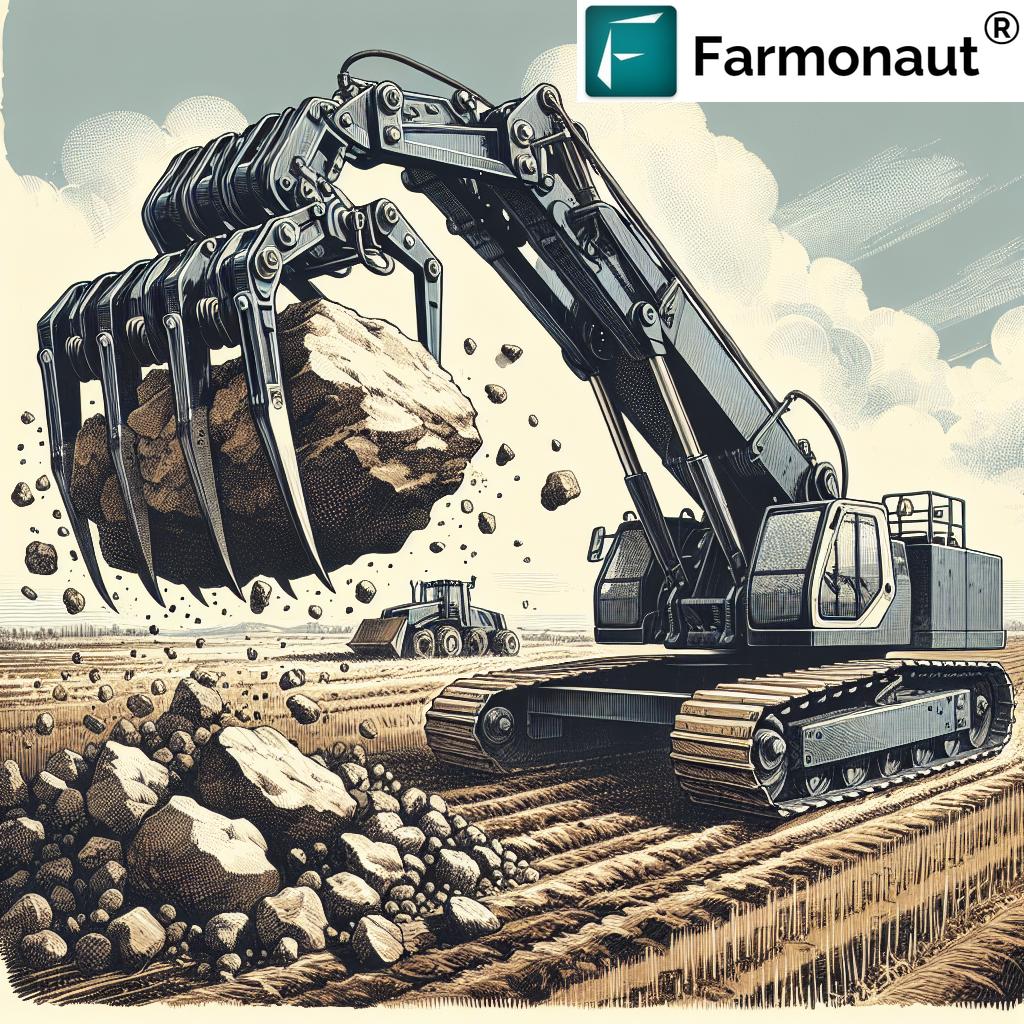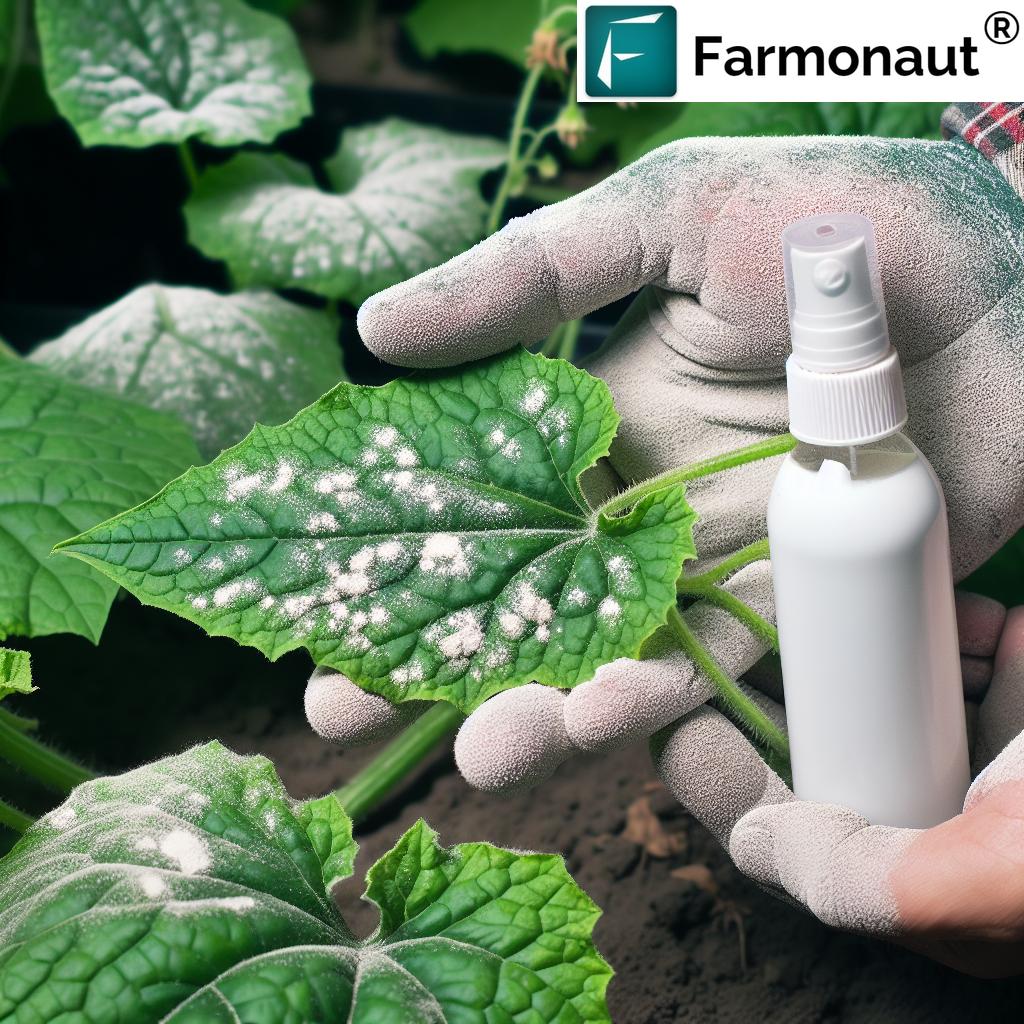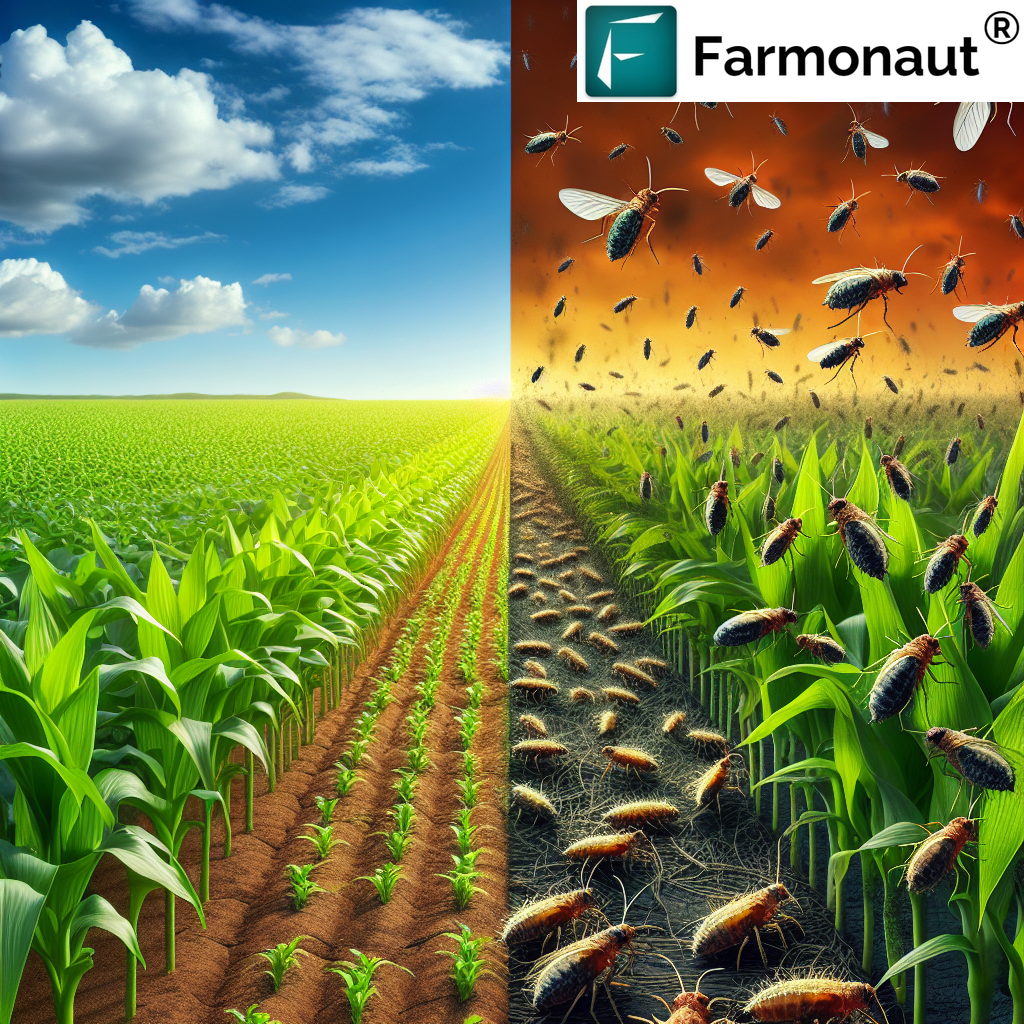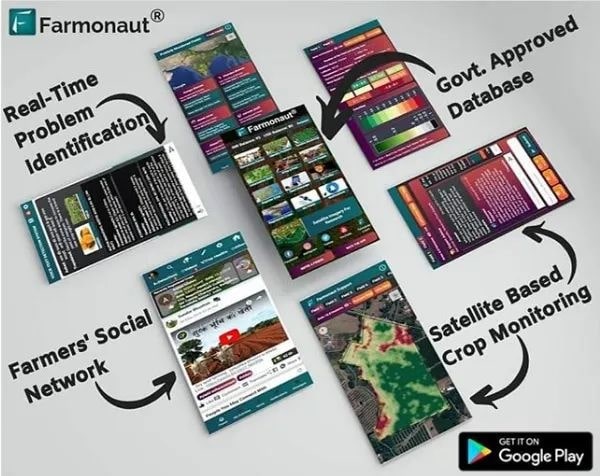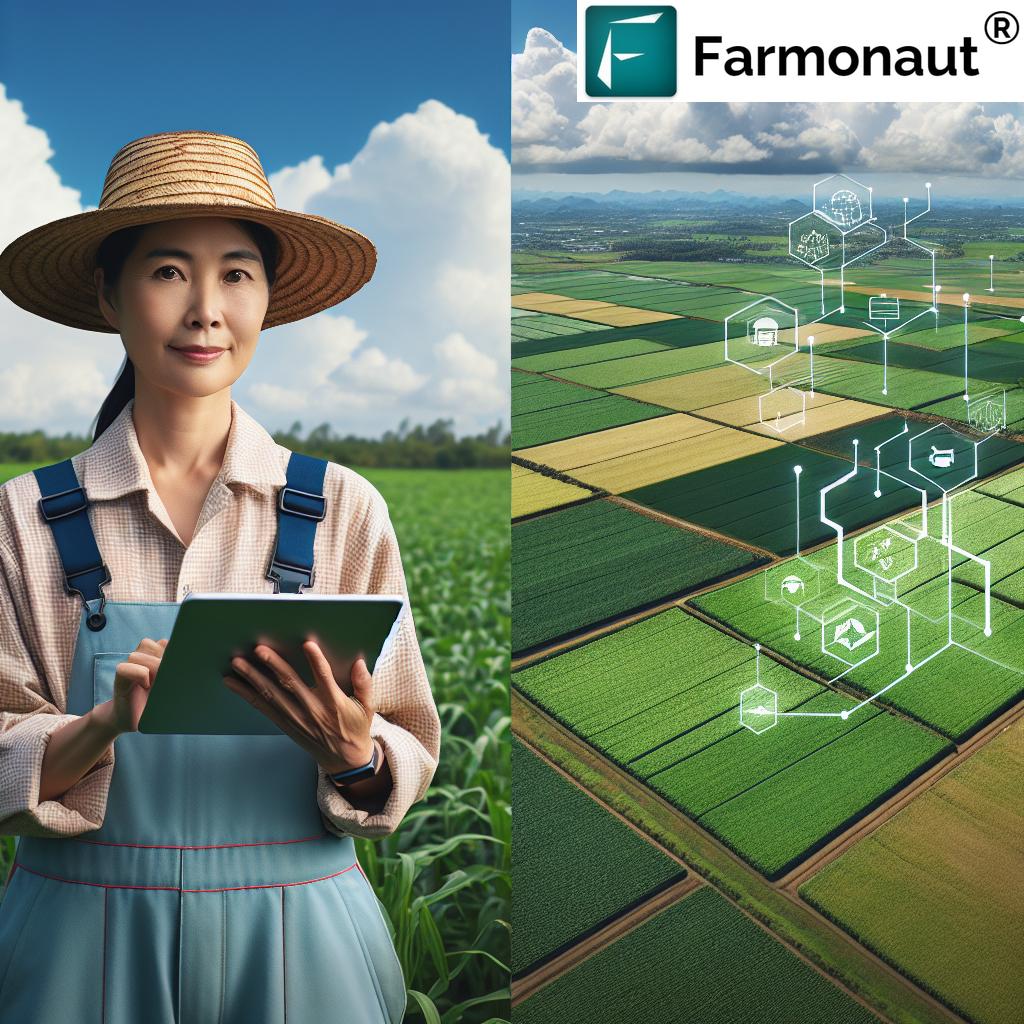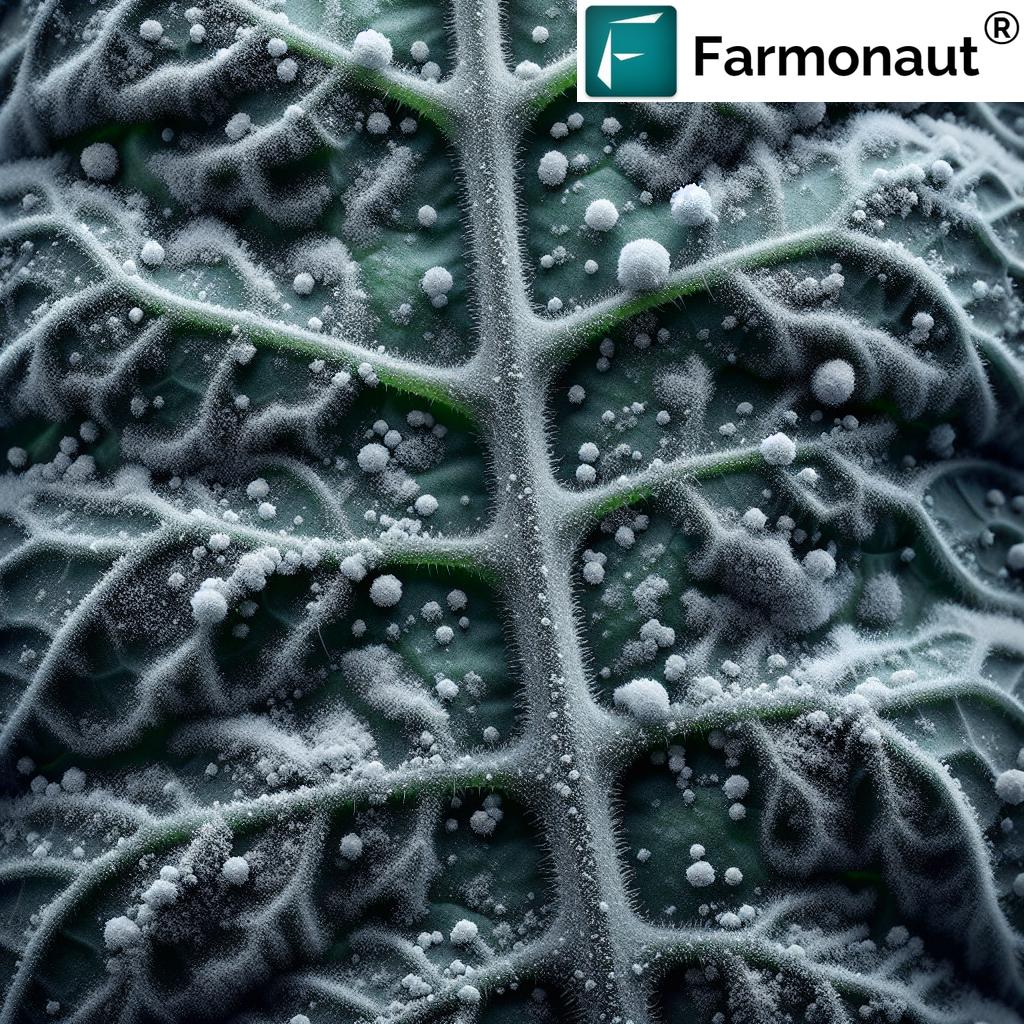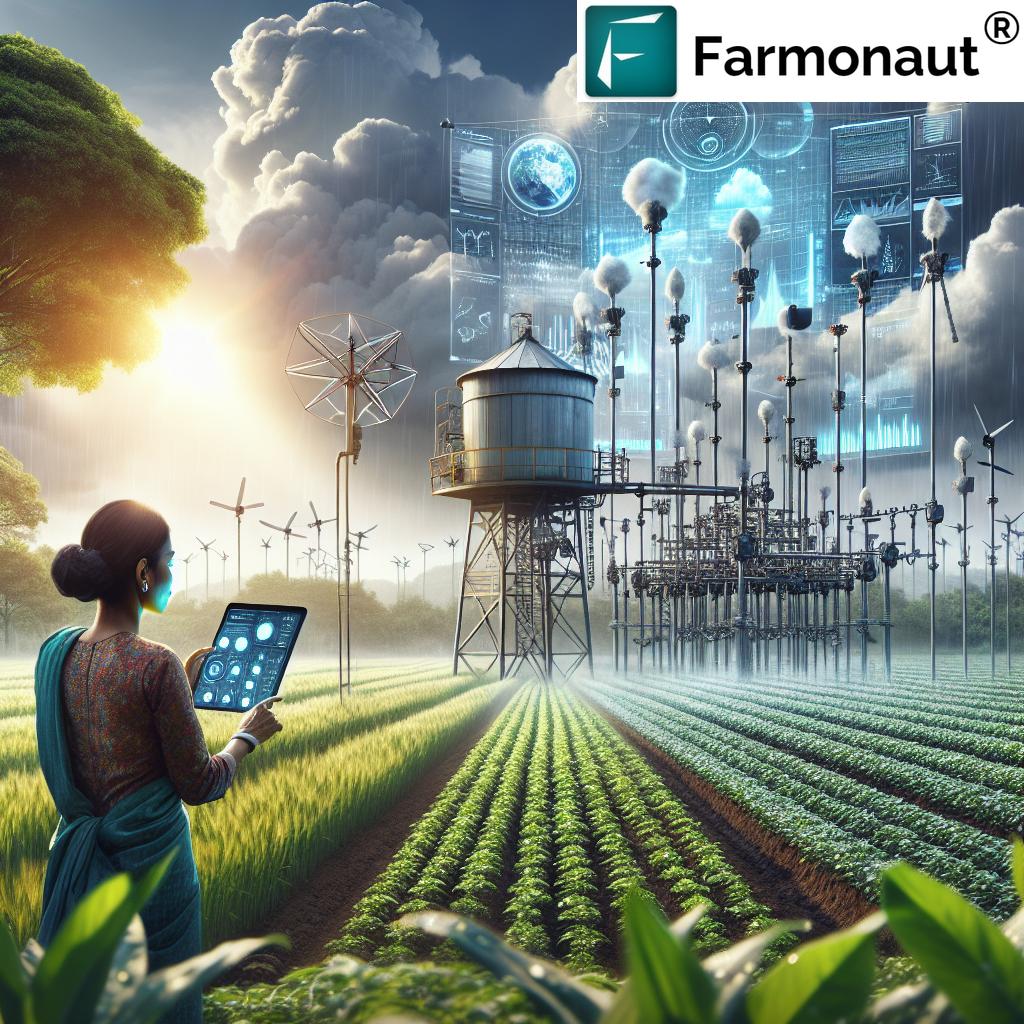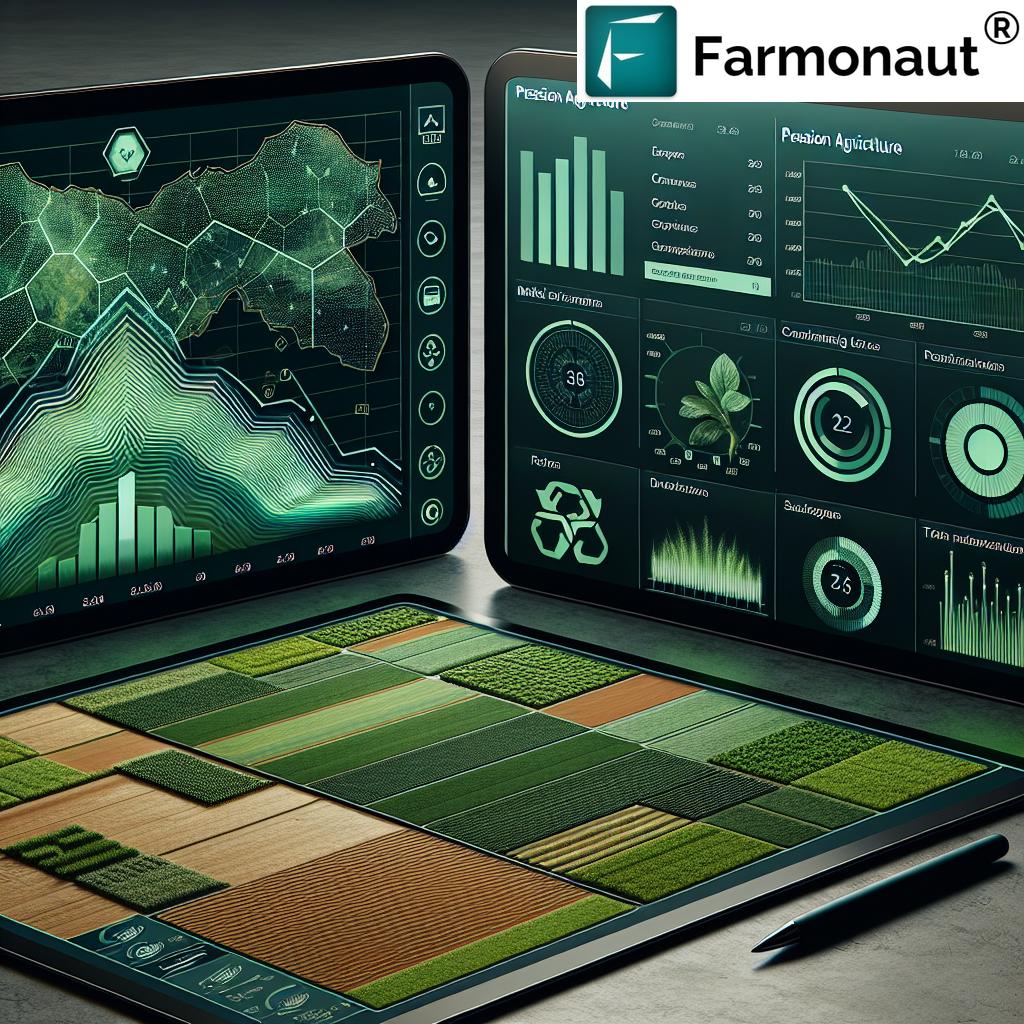Agriculture AI: 7 Powerful Ways Tech Transforms Farming Now
“Over 70% of precision farming solutions now use AI for real-time crop disease detection and yield prediction.”
Table of Contents
- Introduction: AI in Agriculture & Forestry
- Farmonaut: Powering Precision Agriculture with AI & Satellite Imagery
- 7 Powerful Ways AI Is Transforming Agriculture Now
- 1. Advancing Precision Farming Solutions
- 2. Autonomous Machinery: Tractors, Drones, and Harvesters
- 3. Crop Monitoring and Crop Disease Detection
- 4. AI-Driven Supply Chain Optimization in Agriculture
- 5. Enhanced Livestock Management with AI
- 6. AI Applications in Forestry: Conservation & Sustainability
- 7. Climate Change Mitigation & Biodiversity Preservation
- Comparative Impact Table: AI in Agriculture & Forestry
- Challenges & Considerations in AI Integration
- Farmonaut: Advanced, Accessible, and Scalable Solutions
- Frequently Asked Questions (FAQ)
- Conclusion: Toward a Sustainable, Data-Driven Future
Introduction: AI in Agriculture & Forestry
In today’s era of rapid technological advancement, the integration of artificial intelligence (AI) in agriculture and forestry is nothing short of revolutionary.
As we collectively face challenges such as climate change, resource scarcity, unpredictable weather patterns, and the growing global demand for food, it’s clear that traditional farming methods alone are no longer sufficient. We, as a global agricultural community, need data-driven, scalable, and innovative solutions to secure our food future.
AI in agriculture leverages intelligent algorithms to monitor and analyze fields, detect diseases and pests before they cause irreparable damage, optimize supply chains, and elevate both productivity and sustainability. Meanwhile, AI in forestry supports precise timber identification, biodiversity tracking, and climate change mitigation through smarter ecosystem management.
By embedding learning systems into our agricultural machinery, utilizing drones for crop health monitoring, and harnessing the power of satellite imagery, we unlock a new frontier of precision farming. From crop disease detection to forest health monitoring with AI, these cutting-edge technologies are actively shaping the fields and forests of tomorrow.
Farmonaut: Powering Precision Agriculture with AI & Satellite Imagery
At the heart of this revolution is Farmonaut, a pioneering agricultural technology company dedicated to making precision agriculture affordable and accessible worldwide. By merging satellite imagery for farming, AI, machine learning, and blockchain, we deliver actionable data-driven insights that transform how farmers, agribusinesses, and governments approach farm management.
Farmonaut’s suite of technologies:
- Satellite-Based Crop Health Monitoring: Leverages multispectral satellite data to analyze crop health (NDVI), soil moisture, and vegetation growth, enabling early detection of issues such as nutrient deficiencies, pests, and disease outbreaks.
- Jeevn AI Advisory System: Provides real-time, AI-powered advisories tailored to weather updates, farm operations, and optimal input usage for maximum yields.
- Blockchain-Based Product Traceability: Brings transparency to food supply chains so that every step from farm to consumer is verifiable and secure.
Learn more about our blockchain-powered Product Traceability Solution. - Fleet and Resource Management: Lets agribusinesses track vehicles and logistics for cost-effectiveness and risk reduction.
Discover efficient Fleet Management for agriculture. - Carbon Footprinting: Monitors farm-level carbon emissions, helping stakeholders analyze and reduce their environmental impact.
Implement eco-friendly farming with Carbon Footprinting.
These technologies are unified within the Farmonaut platform, available on Android, iOS, web app, and API, making advanced AI-based agriculture tools accessible to all.
7 Powerful Ways AI Is Transforming Agriculture Now
1. Advancing Precision Farming Solutions with AI and Satellite Imagery
Precision farming solutions are unlocking unprecedented levels of productivity and sustainability in agriculture. Through AI-driven analysis, farmers can monitor fields down to the square meter, receiving actionable insights on nutrient deficiencies, weed patches, pest infestations, and irrigation needs.
How It Works:
- Satellite Imagery for Farming: Multispectral satellites, as utilized by platforms like Farmonaut, scan large agricultural fields, detecting anomalies in plant growth or health over vast geographies.
- AI Algorithms: Intelligent systems analyze huge amounts of collected data, identify patterns such as declining vigor, early stages of diseases, or signs of nutrient depletion.
- Decision Support: Farmers receive automated advisories for fertilizer, pesticide application, or optimal seed planting times and row spacing, all based on data analytics.
Benefits:
- Reduces resource wastage by applying water, fertilizer, and crop protection only where needed.
- Enhances yields through targeted interventions, maximizing return on investment.
- Promotes sustainability with data-driven, environmentally sound practices.
Farmonaut’s Integration: By providing affordable access to high-resolution satellite imagery and AI-based farm management technology, we enable the precision agriculture movement for both smallholder and large-scale farmers.
2. Autonomous Machinery: Tractors, Drones, and Harvesters
AI is driving an automation revolution in farming machinery. From autonomous tractors that plant seeds at optimal depth and spacing to aerial drones that scan fields, our agriculture systems are becoming more precise, efficient, and less labor-intensive.
- Autonomous Tractors & Harvesters: Equipped with onboard AI, GPS systems, and camera sensors, these machines can plant, weed, and harvest crops with a high degree of accuracy and minimal supervision.
- Agricultural Drones: These flying robots survey fields, collecting up-to-date imagery for analyzing crop health, irrigation coverage, and identifying problems such as pest hotspots or water stress areas.
- Spraying Robots: AI-controlled machines identify weed and pest infestations with image recognition and apply chemicals only where required, thus minimizing chemical use and soil damage.
Farmonaut supports this transition by offering API services that seamlessly integrate satellite and weather data for use in autonomous machinery—learn more about the API here and see our developer documentation.
3. Crop Monitoring and Crop Disease Detection
Rapid, precise identification of crop diseases and pest infestations is critical to modern agriculture. AI-driven platforms monitor vast tracts of farmland, using machine learning and image recognition to detect early warning signs before they escalate into major outbreaks.
Technologies for Crop Disease Detection:
- Remote Sensing & Satellite Imagery: Platforms like Farmonaut collect
satellite data to analyze plant health (NDVI, EVI), identifying unusual patterns and stress factors over time. - AI-Powered Advisory: Tools such as Farmonaut’s Jeevn AI interpret imagery data alongside weather and field history to prescribe interventions against pests, diseases, or nutrient gaps.
- Alert Systems: AI-driven apps alert farmers about potential threats, specifying treatment zones and recommended actions to limit the spread.
Learn more: Farmonaut’s Crop Plantation & Forest Advisory system for real-time, AI-informed advisories.
Ultimately, by using AI for pest and infestation detection, we proactively safeguard food security and decrease dependency on blanket pesticide applications, resulting in improved yield and environmental health.
Example Insights:
- Spotting anomalies in vegetation growth indicating fungal disease, months before human visual confirmation.
- Identifying early insect infestations and creating custom treatment plans.
- Preventing crop loss by catching deficiency or water stress signals in real time.
4. AI-Driven Supply Chain Optimization in Agriculture
The agricultural supply chain is becoming increasingly complex as consumer demand fluctuates and global trade patterns shift. AI plays a crucial role in optimizing the supply chain by analyzing historical data and real-time market trends to predict demand, manage inventory, and reduce food waste.
- Inventory Management: AI platforms optimize inventory based on projected demand, weather factors, and field status, reducing spoilage and storage costs.
- Production Planning: AI advises on the right timing and scale of production cycles to align with market or supply fluctuations.
- Blockchain Traceability: By adopting tools like Farmonaut’s Traceability Solution, stakeholders can track the journey of agricultural produce for transparency and trust.
- AI Logistics: Fleet and farm management technology systems monitor vehicle routes and schedules to ensure timely delivery to markets.
This approach not only enhances profitability for farmers and agribusinesses but also promotes sustainability by minimizing food loss and environmental burden.
5. Enhanced Livestock Management with AI
AI’s contribution to livestock management is transforming the traditional practice of animal husbandry. With AI-powered livestock monitoring, farmers can continually track animal health, optimize feeding regimens, and improve breeding outcomes.
- Wearable Devices: Collars and tags collect data on vital signs, movement, and feeding, alerting us to early signs of disease or stress.
- Automated Feeding: Smart systems adjust livestock feeding schedules based on age, weight, health status, and productivity requirements.
- Breeding Optimization: AI analyzes reproductive cycles and genetic data to strategically plan mating for higher yields or disease resistance.
These advances significantly improve animal welfare, increase milk and meat production, and reduce costs associated with disease and poor nutrition.
Farmonaut’s resource management features empower livestock operations by optimizing logistics and cost-effectiveness—see our Fleet Management technologies for details.
6. AI Applications in Forestry: Conservation & Sustainability
In the forestry sector, AI and remote sensing technologies help us safeguard natural resources with precision. From automated timber identification to real-time monitoring of forests, AI is central to fostering sustainable management and conservation.
- Timber/Wood Identification: Devices like the XyloTron, powered by AI, aid in immediate species identification to combat illegal logging and safeguard biodiversity.
- Forest Health Monitoring with AI: Drones and satellite imagery, analyzed with image recognition, detect subtle changes in plant health unnoticed by the human eye, enabling early interventions against disease outbreaks, pest infestations, and environmental stress.
- Biodiversity Preservation: AI tools catalogue flora and fauna, helping us maintain delicate ecological balances and plan reforestation projects effectively.
Farmonaut’s platforms extend to large-scale forest health monitoring, combining satellite-based insights for both agricultural and forestry landscapes. For agencies and institutions, check our Large Scale Farm & Forest Management App.
“AI-driven forestry management has improved sustainable practices by analyzing over 1 million hectares of land annually.”
7. Climate Change Mitigation & Biodiversity Preservation
As environmental pressures intensify, AI is increasingly vital in our fight against climate change and the loss of biodiversity. These intelligent systems assist us in:
- Real-Time Ecosystem Monitoring: AI platforms track carbon emissions, assess forest cover, and predict the impact of agricultural practices on climate and local wildlife.
- Detecting Illegal Activities: Automated surveillance spots unauthorized logging or land conversion, supporting conservation law enforcement efforts.
- Adaptive Strategies: By analyzing large amounts of data from satellite sensors, AI helps us design climate-adaptive cropping systems and targeted ecosystem restoration programs.
Farmonaut’s Carbon Footprinting tools enable agribusinesses and forestry managers to calculate, report, and reduce environmental impacts at scale.
Comparative Impact Table: AI in Agriculture & Forestry
| AI Application Area | Estimated Adoption Rate (%) | Productivity Improvement (%) | Environmental Benefit | Notable Technologies Used |
|---|---|---|---|---|
| Precision Farming Solutions | 65% | 20–35% | Reduced chemical/fertilizer & water use, less runoff | Satellite Imagery, AI Algorithms, Mobile Apps (e.g., Farmonaut) |
| Crop Disease Detection | 70% | 10–25% | Lower pesticide usage, early intervention saves crops | Image Recognition, Machine Learning, Remote Sensing |
| Yield Prediction | 50% | 10–18% | Optimized input use, reduced waste | Predictive Modeling, AI Data Analytics |
| Autonomous Machinery | 30% | 5–22% | Reduced fuel & labor, precise application | IoT Sensors, Autonomous Tractors, Agriculture Drones |
| Supply Chain Optimization | 38% | 8–13% | Lower food waste, optimized logistics | Blockchain, AI Logistics, Real-Time Monitoring |
| Livestock Management | 43% | 12–20% | Improved animal welfare, efficient feeding | Wearables, AI Analytics, Feeding Systems |
| Forest Health Monitoring with AI | 28% | – | Biodiversity conservation, reduced illegal logging | Drones, Satellite Imagery, XyloTron Wood ID |
Challenges & Considerations in AI Integration
While the adoption of AI in agriculture and forestry brings considerable advantages, several challenges must be addressed to ensure sustainable and inclusive progress:
- High Investment Costs: Acquiring advanced AI-enabled solutions—including satellite data, machinery, and training—can be cost-prohibitive for small-scale farmers and cooperatives.
- Technical Expertise Gaps: Successful operation and maintenance of these digital platforms require upskilling in data interpretation, systems management, and troubleshooting.
- Resistance to Change: Our deep-rooted agricultural traditions can sometimes foster skepticism toward new technologies, slowing widespread integration.
- Data Privacy & Security: As farms generate increasing volumes of sensitive information, concerns around privacy and data misuse become paramount. Strict standards for ethical, responsible AI use are essential.
Farmonaut is deeply invested in breaking these barriers through an affordable, easy-to-use, and accessible platform for all kinds of users, supported by robust data security and privacy protocols.
Farmonaut: Advanced, Accessible, and Scalable Solutions
Our goal at Farmonaut is to democratize access to agricultural AI solutions regardless of farm size, location, or technical background.
Key advantages of choosing Farmonaut:
- Affordable Precision Agriculture: We use satellite imagery (no expensive onsite hardware required) to bring real-time monitoring and decision support to all farmers, from smallholders to corporate agribusinesses.
- Comprehensive Crop & Resource Management: Monitor crop health, track soil moisture, optimize irrigation, and receive instant AI advisories—improving yields and minimizing input costs.
- Sustainable Agriculture Technologies: Our carbon footprinting and traceability features promote transparency and environmentally-friendly practices across all operations.
- Scalable, User-Friendly Apps & API: Access our services via web, Android, iOS, or integrate Farmonaut data streams directly into your farm management software via the Farmonaut API.
Our subscription packages are tailored to every scale:
Frequently Asked Questions (FAQ) — AI in Agriculture
-
What is the role of AI in agriculture today?
AI assists in monitoring crop and livestock health, automating tasks, detecting diseases early, predicting yields, and optimizing resource use—ensuring sustainability and higher productivity.
-
How does Farmonaut use satellite imagery for farming?
Farmonaut analyzes multispectral satellite images to assess crop health, detect anomalies, and provide actionable advisories—empowering farmers to make informed decisions in real time.
-
Can smallholder farmers access Farmonaut’s AI-based farm management technology?
Yes. One of Farmonaut’s main objectives is to offer affordable, user-friendly solutions to small and medium-sized farms, making advanced precision farming tools accessible to all.
-
How can AI help in detecting crop disease and pest infestations?
AI-powered platforms scan data from drones and satellites to detect pattern anomalies in crop growth, identifying diseases or pests at an early stage, and recommending precise interventions.
-
What is blockchain traceability, and why does it matter?
Blockchain traceability ensures that every stage of a product’s journey from farm to consumer is logged and visible. This enhances food safety, transparency, and consumer trust.
-
What challenges do farmers face when integrating AI?
Major challenges include high upfront investment, technical skill requirements, resistance to change, and concerns around data privacy. Companies like Farmonaut are helping to bridge these gaps.
Conclusion: Toward a Sustainable, Data-Driven Future in Agriculture and Forestry
Artificial intelligence in agriculture and forestry represents the future of food production, environmental stewardship, and resource management. By embracing innovative technologies like satellite imagery, machine learning, autonomous equipment, and AI-driven analytics, we unlock the potential for sustainable, resilient, and productive landscapes worldwide.
At Farmonaut, we’re proud to provide the digital bridge between data and the field, empowering every grower, business, and institution to participate in this new era of smart farm management. Whether it’s detecting crop disease, tracking carbon footprints, or optimizing food supply chains, we continue working to make precision farming accessible, affordable, and actionable worldwide.
Ready to be a part of the agricultural AI revolution?
Access our Android, iOS, or web platform or directly integrate with the Farmonaut API—all designed to help you optimize every hectare, boost yields, and build a more sustainable future for all.
Further Reading & Resources:
Farmonaut Crop Plantation & Forest Advisory |
Product Traceability |
Carbon Footprinting |
Fleet Management |
Farmonaut API






